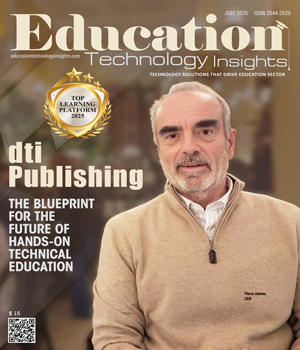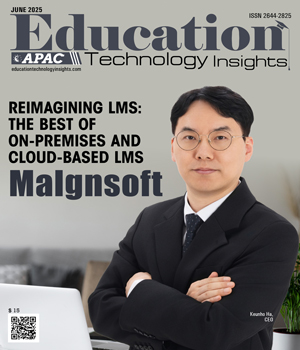THANK YOU FOR SUBSCRIBING
Be first to read the latest tech news, Industry Leader's Insights, and CIO interviews of medium and large enterprises exclusively from Education Technology Insights
From Classroom To Career: How Digital Learning Powers The Future
Melody Buckner, Associate Vice Provost for Digital Learning and Online Initiatives, University of Arizona
 Melody Buckner, Associate Vice Provost for Digital Learning and Online Initiatives, University of Arizona
Melody Buckner, Associate Vice Provost for Digital Learning and Online Initiatives, University of ArizonaBefore we power the future with digital learning, there needs to be an understanding of what this term represents. In a broad sense, digital learning uses technology to enhance how learners’ access, engage with, and apply knowledge. It could include, but is not limited to online courses, hybrid classrooms, interactive tools, artificial intelligence, virtual reality and multimedia content making learning more flexible, personalized, and accessible. It should be central to workforce development, helping learners to build digital skills and ethics, flexibility and adaptability and most importantly the lifelong learning habits needed to succeed in today's technology-driven economy.
Digital learning needs to become a ubiquitous component of contemporary education. It should be an integral thread woven into the pattern of our educational landscape transforming not only how students engage with content but also how they are prepared for a rapidly evolving workforce. As the demands of a connected society shift toward technology and digitally mediated work environments, educational institutions should be embedding digital learning across disciplines to ensure students acquire the skills, the ethics, the mindsets, and the literacies essential for their future success.
One of the most significant changes should be the integration of digital learning as a foundational element rather than a supplementary tool. From K–12 to higher education, learning management systems, video-based instruction, interactive simulations, and collaborative tools should become a standard in the daily lives of our students. Since 2020 when students were forced into online learning environments because of a global pandemic they have become more comfortable engaging with content through online discussion forums, real-time collaboration tools, multimedia resources, and adaptive learning platforms. These platforms can personalize instruction based on data and performance. In some instances, these technologies not only support access and flexibility but also mirror the digital communication and productivity tools used in the modern workplace.
“Digital learning is no longer a barnacle on the educational ship, it is the rudder that should steer how we educate for the future”
Digital learning fosters key workforce competencies such as problem-solving, collaboration, digital literacy, and the ability to navigate complex information systems. By incorporating technology-enhanced learning into the curriculum, educators can help students become agile learners who can adapt to emerging tools and trends in real-time. The ability to learn independently, manage digital workflows, and collaborate across various virtual platforms are becoming baseline requirements for most professions. This expectation spans healthcare and engineering to education and entrepreneurship.
Digital learning supports interdisciplinary thinking and innovation. Students can explore fields like digital humanities, information science, cybersecurity, and online marketing through virtual labs, experiential learning, or internships. They can also develop creativity through multimodal projects combining coding, storytelling, visual design, and data analysis. Such experiences not only enrich academic learning but also build portfolios of digital work that are increasingly important in job searches and career development.
The shift to digital learning also aligns with the growing need for lifelong learning. As careers evolve and reskilling becomes necessary, microcredentials, digital badges, and flexible online programs allow individuals to upskill quickly and affordably. Hopefully, universities and employers will recognize the value of stackable credentials and just-in-time learning as part of a more dynamic model of workforce development.
The ubiquity of digital learning also demands intentional instructional design, inclusive access, and attention to digital ethics among educators. Equity remains a critical concern, as not all students have the same access to devices, connectivity, or support. It is vital for institutions to ensure digital integration is both pedagogically sound and equitably distributed.
Digital learning is no longer a barnacle on the educational ship, it is the rudder that should steer how we educate for the future. As digital environments continue to shape our society and redefine the nature of work, we need to mold our curriculum to embrace digital learning to not only enhance academic engagement but also prepare students to thrive in a digitally interconnected and innovation-driven world.
Read Also
Our AI Crisis isn't Technical. It's Human.
4 Keys to Managing Change
Active Engagement is the Foundation of Effective Leadership
Empowering Leadership through Innovation in Higher Education
Redefining Readiness: A Path Toward a Technology-Agnostic Future
The New Era of Education

I agree We use cookies on this website to enhance your user experience. By clicking any link on this page you are giving your consent for us to set cookies. More info

However, if you would like to share the information in this article, you may use the link below:
www.educationtechnologyinsightsapac.com/cxoinsights/melody-buckner-nid-3195.html






















